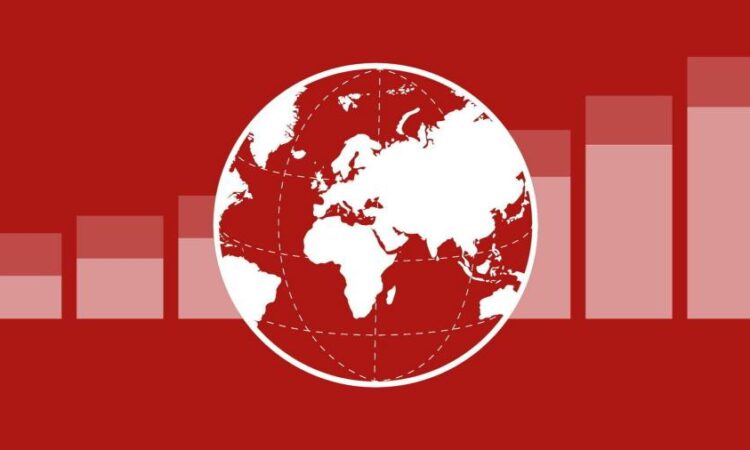
Receive free Markets updates
We’ll send you a myFT Daily Digest email rounding up the latest Markets news every morning.
US stocks turned lower on Tuesday, with banks leading the declines, as investors assessed recent ratings downgrades and look ahead to the Jackson Hole economic conference later this week.
Wall Street’s benchmark S&P 500 closed down 0.3 per cent, with financials dragging the index lower, with most other sectors also in the red.
Rating agency Standard & Poor’s on Monday night lowered its ratings on five US regional banks — Associated Banc Corp, Comerica, KeyCorp, Valley National and UMB Financial — assigning “stable” outlooks to them. All but UMB ended the day down more than 4 per cent. UMB closed about 3 per cent lower.
Pointing to “tough operating conditions”, S&P said its review had been based on factors including changes in deposits and funding costs, loan-to-deposit ratios, dependence on wholesale funding and relative exposures to commercial real estate.
The move by S&P came after fellow agency Moody’s cut the rating of 10 midsized US banks earlier in August, while placing six ratings under “review”.
Larger banks also slipped, with JPMorgan, Citibank and Bank of America all down at least 2 per cent. Goldman Sachs shed 1 per cent and Morgan Stanley fell 1.5 per cent.
Those losses were reflected in the KBW banking index, which was 2.6 per cent lower, while the more focused regional index fell 2.7 per cent.
Other fallers during the session included Charles Schwab, which slid 5 per cent after the brokerage pointed to cost-cutting plans — noting in a 10-Q filing that it was “assessing its real estate footprint” and “plans to reduce its operating costs primarily through lower headcount and professional services”. It said it expected “to realise at least $500mn of incremental runrate cost savings in addition to integration synergies”.
Investors were also looking ahead to this week’s economic policy conference for global central bankers in Jackson Hole, Wyoming, where a speech from Federal Reserve chair Jay Powell will be scrutinised for clues about the future path for US interest rates.
“The general consensus appears to be for a slightly hawkish leaning tone from the Fed chair . . . with a pushback against the discount of rate cuts further out,” said Padhraic Garvey, regional head of Americas research at ING.
Recent strong economic data in the US has prompted investors to rethink their outlook on rates, and bet that the central bank will keep its benchmark rate elevated for longer, having already taken rates to a 22-year high.
The dollar index, which tends to strengthen when markets expect higher rates, touched its highest intraday level since mid June, against a basket of six peer currencies.

In government bond markets, the policy-sensitive two-year Treasury yield rose 0.06 percentage points to just over 5 per cent — reaching its highest level since early July. The benchmark 10-year yield slipped 0.01 percentage points to 4.33 per cent as its price ticked higher after trading at a 16-year high on Monday. Prices fall as yields rise.
Elsewhere in equities, the tech-focused Nasdaq Composite gauge advanced 0.1 per cent, building on gains from the previous session. But chipmakers traded lower, with the Philadelphia Semiconductor index sliding 0.9 per cent.
Nvidia, which is due to report second-quarter earnings on Wednesday, shed 2.8 per cent.
In Europe, the region-wide Stoxx 600 rose 0.7 per cent, while France’s Cac 40 added 0.6 per cent and Germany’s Dax gained 0.7 per cent.
The Stoxx Europe 600 Technology index was among the top gainers in the region, up 2 per cent, as news that British chip designer Arm had been valued at $64bn in an internal transaction this month boosted valuations.





